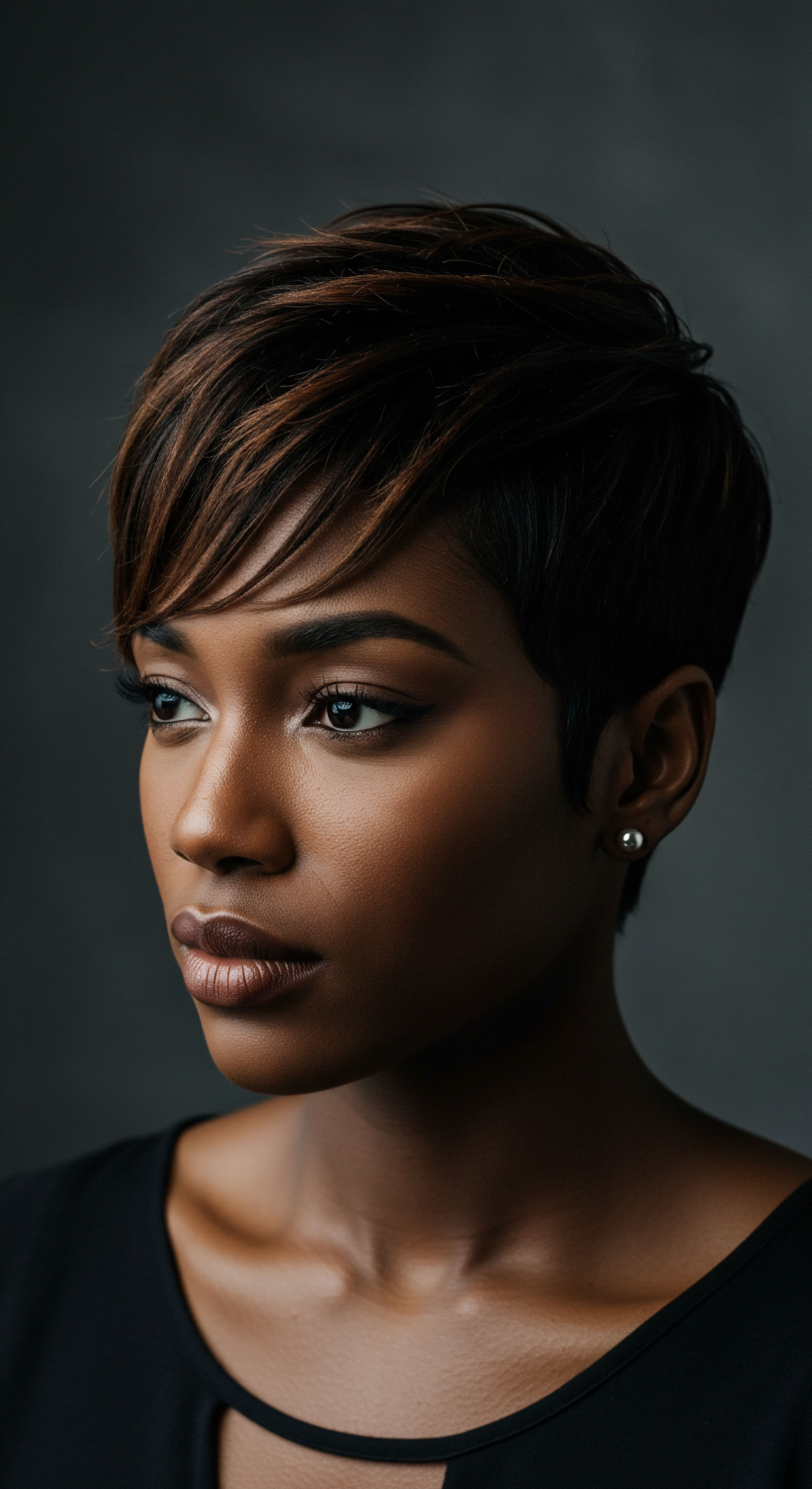
Roots
The human connection to the natural world runs deep, a bond often expressed through the quiet care of our bodies, especially our hair. Long before the gleaming bottles and intricate formulations of today, people across continents turned to the earth’s bounty, drawing sustenance and solace from plants. Within this ancient wisdom, plant oils held a revered place, their rich textures and subtle scents woven into the very fabric of daily life and ritual.
These ancestral elixirs, pressed from seeds, fruits, and nuts, were not merely cosmetic aids; they were foundational elements of wellbeing, passed down through generations, each drop carrying stories of sun-drenched fields, patient hands, and the deep understanding of what our strands truly need. Roothea invites you to consider these origins, to trace the lineage of moisture back to its earliest, most elemental forms, and to feel the gentle resonance of a heritage that celebrates hair in its natural, thriving state.
Across diverse civilizations, the art of extracting and applying plant oils for hair moisture was a common thread, born from necessity and refined by centuries of observation. From the arid landscapes of North Africa to the lush rainforests of the Amazon, indigenous communities discovered which botanical treasures offered the most profound hydration and protection for their hair. This knowledge was often communal, shared amongst elders and youth, becoming a vital part of cultural identity and communal practice.

The Ancient Lore of Lipid Elixirs
In the dawn of human history, hair was more than adornment; it was a symbol, a protector, and a canvas for identity. The recognition of oils as potent allies in maintaining hair health emerged organically. Early gatherers and agricultural societies learned to render fats and press oils from local flora.
These practices were not uniform; they adapted to the specific environments and the plants available. For instance, in regions where olive trees flourished, olive oil became a staple for hair care, revered for its emollient properties that sealed the hair cuticle and trapped moisture within.
Consider the ancient Egyptians, who meticulously cared for their hair, often adorning it with elaborate styles. They utilized oils from plants like castor and moringa, not just for moisture but also for their purported properties in promoting growth and maintaining scalp health. The use of oils was often part of a broader beauty regimen that spoke to a profound respect for personal presentation and spiritual connection. Similarly, in the Indian subcontinent, Ayurvedic traditions placed immense value on hair oiling, with coconut oil, amla, and bhringraj being central to practices designed to strengthen hair, reduce loss, and promote growth.
Ancestral plant oils offered more than simple moisture; they provided a deep connection to nature and heritage through their application.

Why Hair Craves Natural Oils
Textured hair, with its unique curl patterns and structural variations, often experiences a greater challenge in retaining moisture. The natural oils produced by the scalp, known as sebum, travel down the hair shaft with more difficulty on coiled strands, leaving the ends particularly vulnerable to dryness. Ancestral communities intuitively understood this predisposition, observing how certain oils could mimic or supplement the hair’s natural lipids, providing a protective coating and sealing in hydration.
The hair cuticle, the outermost layer of the hair shaft, plays a critical role in moisture retention. When healthy, these overlapping cells lie flat, creating a smooth surface that reflects light and locks in moisture. When compromised by environmental factors or harsh practices, the cuticle can lift, leading to increased porosity and moisture loss. Plant oils, with their diverse fatty acid profiles, were historically employed to smooth and seal this vital protective layer.
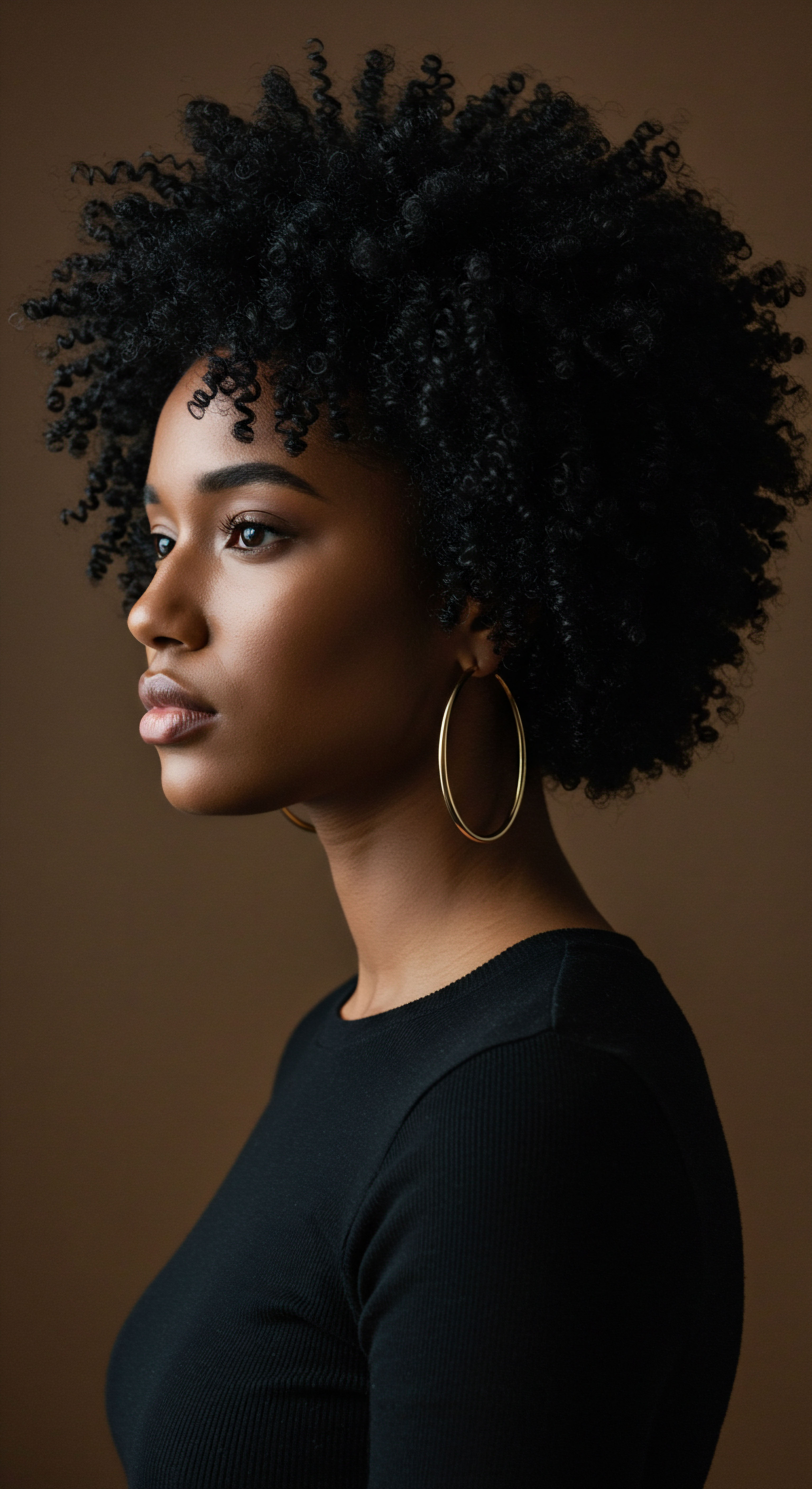
Geographic Diversity of Plant Oil Traditions
The specific plant oils used varied significantly by geographical region, reflecting the local biodiversity and cultural knowledge.
- African Continent ❉ Shea butter, derived from the nuts of the African shea tree, stands as a cornerstone of hair care across many African tribes. Its rich, creamy consistency and deeply moisturizing properties made it an ideal protector against harsh environmental conditions. Red palm oil, with its vibrant hue and nutrient density, also found use in certain communities. Baobab oil, from the “tree of life,” provided conditioning and nourishment.
- Americas ❉ Indigenous peoples of the Americas drew upon plants native to their lands. Yucca root, for instance, was used as a natural cleanser and conditioner, while oils from plants like jojoba, found in the Sonoran Desert, were applied for their resemblance to the skin’s natural sebum, offering protection and moisture. Some tribes also utilized animal fats, such as Bear Grease, mixed with plant materials for hair conditioning and protection.
- Asian Continent ❉ Beyond the widely known coconut oil and Ayurvedic staples like amla and bhringraj, other regional oils played roles. In Japan, Camellia Oil became a secret to lustrous hair, valued for its ability to maintain shine and softness. In Southeast Asia, traditional uses of oils like kukui nut oil provided moisture and protection for hair exposed to humid climates.
- Mediterranean and Middle East ❉ Olive oil was a primary hair treatment in Mediterranean cultures, enhancing shine and softness. Castor oil, too, was historically used in regions like ancient Egypt for promoting hair growth and improving hair texture. Black seed oil, with its origins in the Middle East, also found its way into traditional hair care practices.
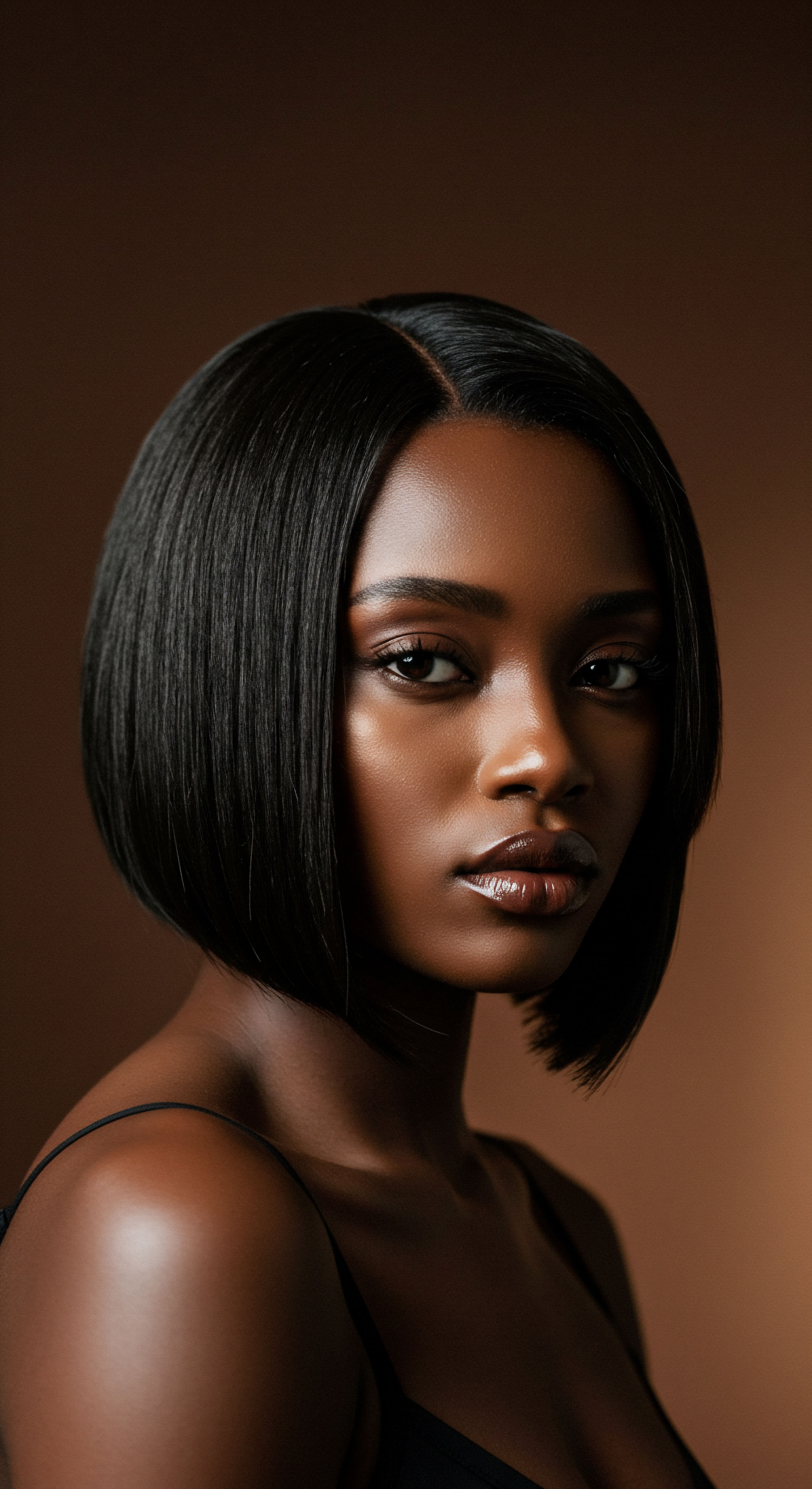
Sourcing and Preparing Ancestral Oils
The methods of obtaining these oils were often laborious, requiring patience and skill. Cold-pressing, a method that preserved the oil’s nutritional integrity, was a common technique. Seeds and nuts were crushed and pressed, sometimes by hand, to extract the precious liquid.
For substances like shea butter, the process involved collecting nuts, cracking them, roasting, grinding, and then kneading the paste to separate the butter. These labor-intensive methods underscore the high value placed on these natural resources and the deep connection people had to their environment.
The understanding of these ancient practices allows us to appreciate the profound connection between human ingenuity, the natural world, and the enduring quest for healthy, vibrant hair. It also invites us to reconsider the simple yet potent power of plant oils in our modern routines.
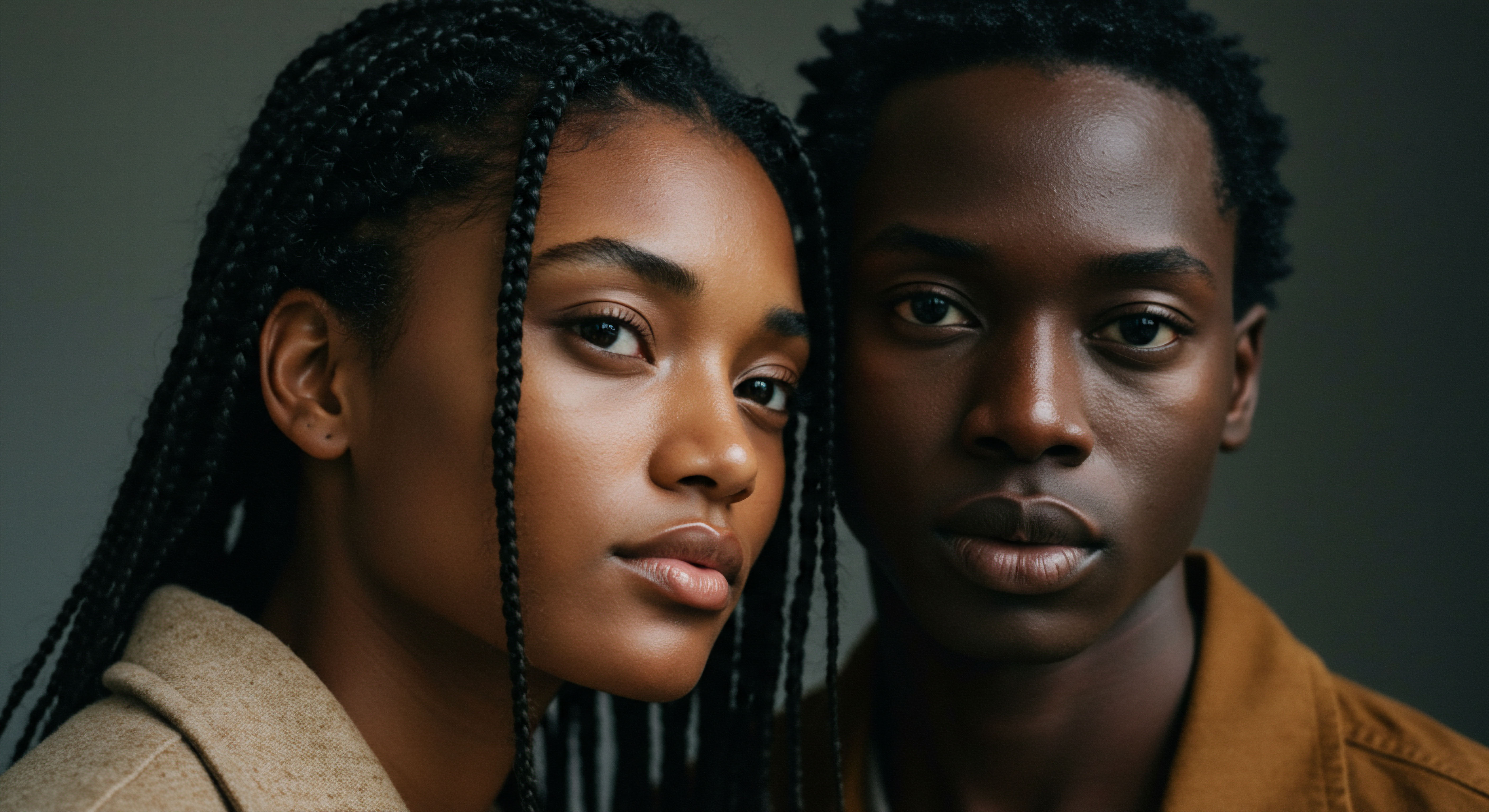
Ritual
Moving beyond the simple identification of ancestral plant oils, we find ourselves at the heart of their true power ❉ the rituals that breathed life into their application. For our ancestors, hair care was seldom a hurried task; it was a deliberate act, often imbued with meaning, connection, and a deep understanding of cyclical rhythms. This section invites you to consider the tangible practices, the gentle hands, and the shared wisdom that transformed raw plant oils into profound acts of care for textured hair. It speaks to the applied wisdom, the nuanced techniques that allowed these natural treasures to truly serve the hair, offering not just surface sheen but deep, lasting moisture.
The efficacy of these oils was deeply intertwined with how they were prepared and applied. Traditional methods ensured the oils retained their beneficial properties, and the very act of application became a moment of mindfulness, a connection to heritage and self.
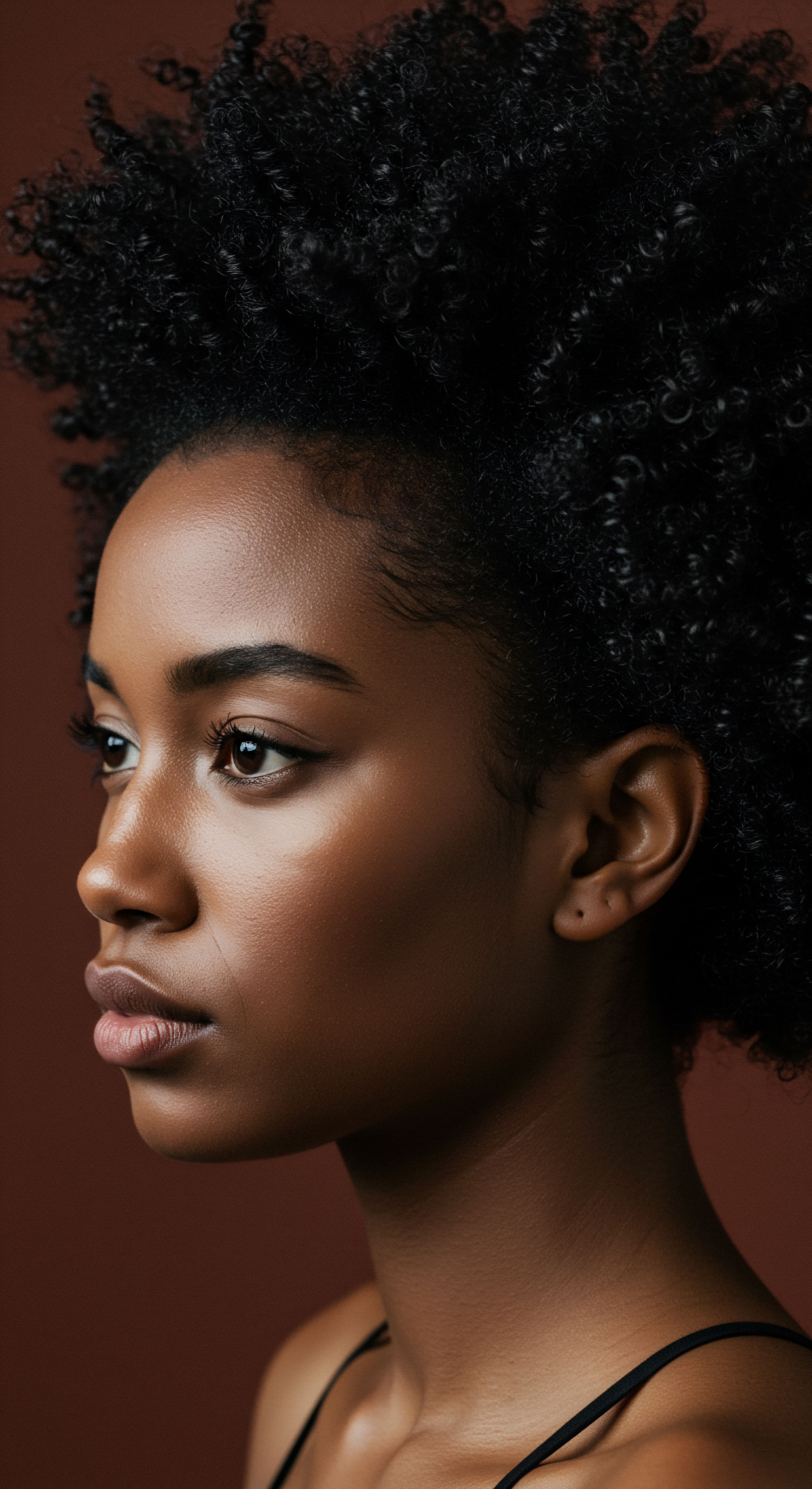
Preparing the Sacred Oils
Ancestral communities often had specific methods for preparing oils, sometimes infusing them with herbs or warming them gently. This preparation was not merely practical; it often carried symbolic weight. For example, in Ayurvedic traditions, oils might be slow-cooked with specific herbs like bhringraj or amla to enhance their properties, a process believed to transfer the botanical’s vital energy into the oil. The gentle warmth of the oil, when applied, was thought to aid absorption and stimulate the scalp.
Consider the meticulous process of rendering Shea Butter. After collection, the nuts undergo a series of steps including cracking, roasting, grinding into a paste, and then patiently kneading this paste with water. The butter separates, floats to the top, and is skimmed off, then purified. This artisanal production ensures a high-quality, unrefined product that retains all its natural goodness.

Application Techniques for Deep Hydration
The way oils were applied was as important as the oils themselves. It was not a casual gesture but a practiced technique, often involving rhythmic movements and specific sequences.
- Scalp Massage ❉ Many traditions emphasized massaging oils into the scalp. This practice was believed to stimulate blood circulation, which in turn could nourish hair follicles and promote healthy growth. For instance, in Ayurvedic practices, bhringraj oil was massaged into the scalp to boost blood flow and strengthen roots.
- Pre-Wash Treatment ❉ Applying oils as a pre-shampoo treatment was a common method to protect hair from the stripping effects of cleansing agents. This allowed the oil to coat the hair shaft, minimizing protein loss during washing. Coconut oil, particularly, has been noted for its ability to penetrate the hair shaft, reducing protein loss when used as a pre-wash treatment.
- Sealing Moisture ❉ For textured hair, which is prone to moisture loss, oils served as occlusive agents, creating a barrier to seal in hydration. This was often done after wetting the hair or applying a water-based product. This method is mirrored in modern practices like the LOC (Liquid, Oil, Cream) or LCO (Liquid, Cream, Oil) method, where oil acts as a sealant.
Traditional hair oiling transformed a simple ingredient into a nourishing ritual, deeply connecting individuals to their heritage.
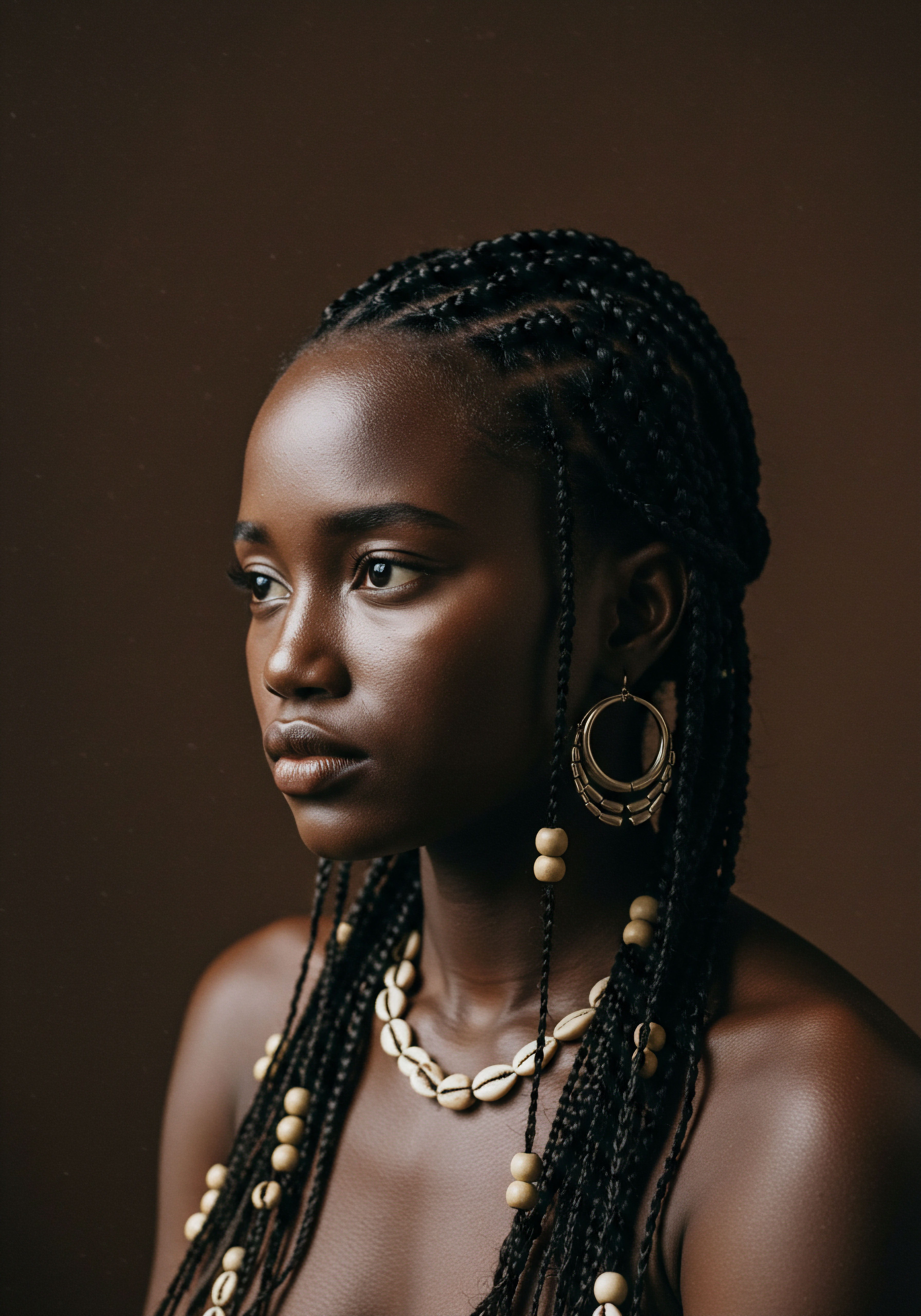
Oils for Diverse Hair Needs
Ancestral wisdom recognized that different oils offered distinct benefits, catering to various hair needs and scalp conditions.
| Plant Oil Coconut Oil |
| Traditional Region India, Southeast Asia, Pacific Islands |
| Primary Hair Benefit Deep penetration, protein loss reduction, moisture retention. |
| Plant Oil Olive Oil |
| Traditional Region Mediterranean, Middle East |
| Primary Hair Benefit Emollient, cuticle sealing, shine. |
| Plant Oil Castor Oil |
| Traditional Region Africa, India, Middle East |
| Primary Hair Benefit Moisturizing, scalp health, thickness. |
| Plant Oil Shea Butter |
| Traditional Region West Africa |
| Primary Hair Benefit Intense moisture, protection from elements. |
| Plant Oil Amla Oil |
| Traditional Region India (Ayurveda) |
| Primary Hair Benefit Scalp health, hair growth, conditioning. |
| Plant Oil Bhringraj Oil |
| Traditional Region India (Ayurveda) |
| Primary Hair Benefit Scalp circulation, hair growth, anti-graying. |
| Plant Oil Jojoba Oil |
| Traditional Region Southwestern North America |
| Primary Hair Benefit Mimics natural sebum, balances scalp oil, cuticle sealing. |
| Plant Oil Argan Oil |
| Traditional Region Morocco |
| Primary Hair Benefit Moisturizing, frizz reduction, shine. |
| Plant Oil These oils were chosen for their unique properties to address specific hair and scalp concerns across different climates and hair types. |
For those with dry, brittle hair, heavier oils like Castor Oil or Shea Butter provided a substantial moisture barrier. For scalp concerns, oils with purifying properties, such as certain infused oils, were favored. The choices were not random; they were informed by generations of practical application and observation.

Community and Intergenerational Knowledge
Hair care rituals were often communal affairs, particularly among women. Mothers taught daughters, grandmothers guided granddaughters, and friends shared their secrets. This intergenerational transfer of knowledge ensured that practices were preserved and adapted.
These moments of shared care were not just about applying oil; they were about bonding, storytelling, and reinforcing cultural identity. The rhythm of brushing, sectioning, and oiling hair became a language of love and connection.
Seasonal changes also influenced the choice and application of oils. In colder, drier months, richer, more occlusive oils might be preferred to combat environmental stressors. During warmer, more humid periods, lighter oils might be chosen to avoid weighing down the hair. This adaptability highlights a deep, intuitive understanding of hair’s response to its surroundings.
The sensory experience of these rituals—the earthy scent of unrefined shea, the warmth of oil on the scalp, the gentle glide of fingers through strands—added another layer of wellbeing. It was a holistic approach to care, nurturing not just the hair, but the spirit as well.
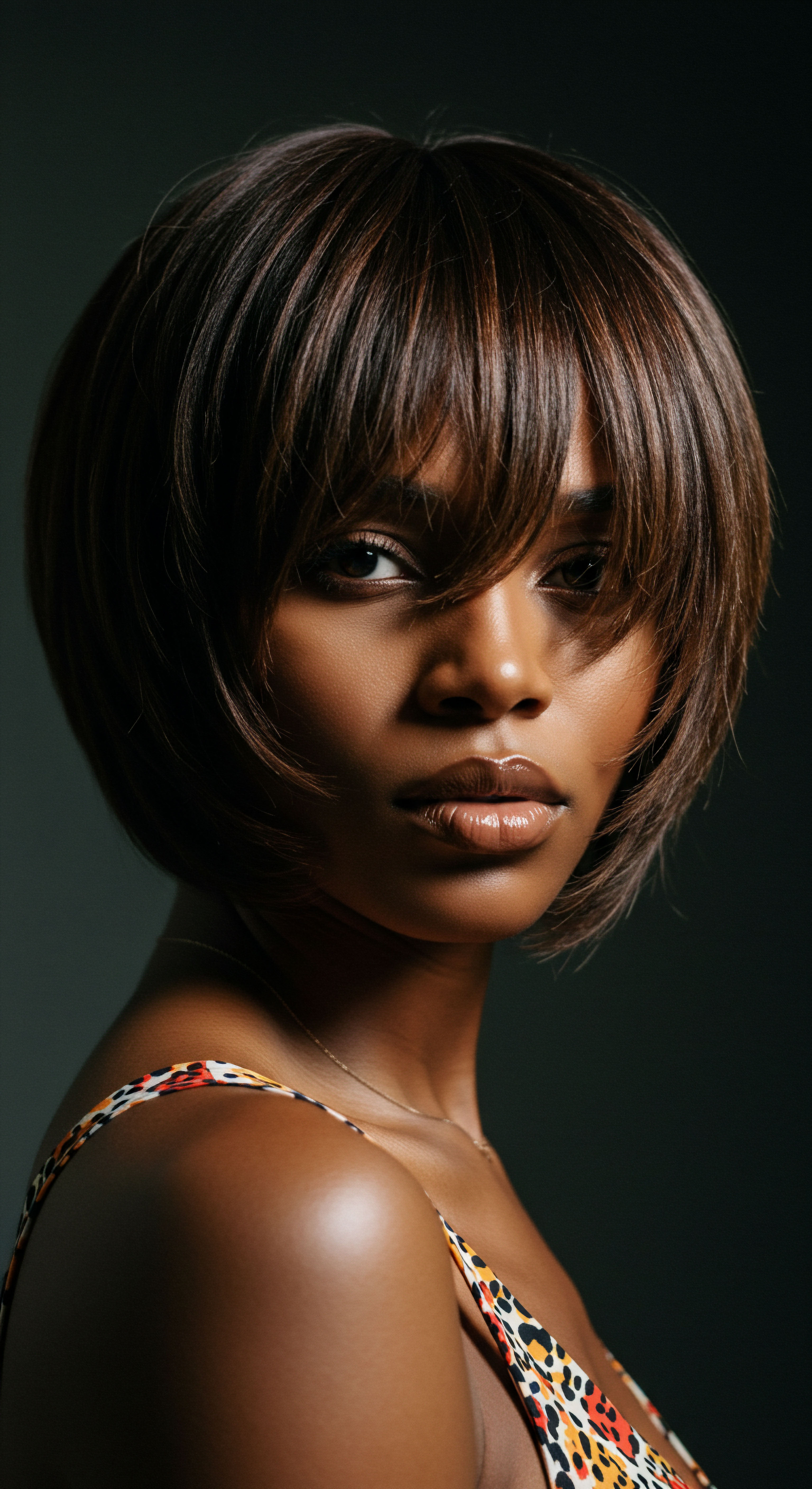
Relay
Stepping into the more intricate layers of ancestral plant oils for hair moisture means recognizing the profound interplay between tradition, biological response, and cultural context. How did these ancient practices, often rooted in intuitive observation, align with what modern science now reveals about hair’s delicate structure and its thirst for hydration? This section invites a deeper contemplation, moving beyond surface understanding to examine the scientific underpinnings and the broader implications of these time-honored botanical selections. It’s a space where ancestral wisdom meets contemporary inquiry, revealing the enduring relevance of these natural gifts.
The scientific validation of traditional practices lends a compelling dimension to the story of ancestral oils. What was once observed through generations of trial and refinement can now be explained at a molecular level, bridging the gap between ancient lore and modern understanding.

Biochemical Interactions and Hair Structure
Hair, at its core, is a complex protein fiber, primarily composed of keratin. Its outermost layer, the cuticle, functions as a protective shield. The integrity of this cuticle is paramount for moisture retention. When the cuticle is lifted or damaged, hair becomes porous, allowing water to enter and leave too readily, leading to dryness and brittleness.
Plant oils are composed of various fatty acids, triglycerides, and other lipid compounds. The molecular size and structure of these components determine how well an oil can penetrate the hair shaft or simply coat its surface.
- Small Molecular Weight Oils ❉ Oils with smaller molecular weights, such as Coconut Oil (rich in lauric acid), are unique in their ability to penetrate beyond the cuticle and into the hair’s cortex. This deep penetration helps to reduce protein loss, a significant factor in maintaining hair strength and preventing hygral fatigue (damage from repeated swelling and drying). This is a crucial distinction, as many other oils primarily act as surface sealants.
- Larger Molecular Weight Oils ❉ Oils like Jojoba Oil or Squalane (often derived from olives) have a molecular structure similar to the hair’s natural sebum. While they may not penetrate as deeply as coconut oil, they excel at coating the hair shaft, smoothing the cuticle, reducing frizz, and sealing in moisture, offering a glossy finish without heaviness.
- Rich Fatty Acid Profiles ❉ Oils like Argan Oil and Marula Oil are abundant in oleic and linoleic acids, providing moisturizing and softening effects. These fatty acids contribute to the hair’s elasticity and overall resilience.
The understanding of hair lipid composition is an evolving field. Research indicates that hair lipids provide a protective barrier against environmental and chemical damage, preventing breakage and affecting the hair’s elastic and tensile properties. Lipid loss, often accelerated by treatments like bleaching or excessive heat, leads to dehydrated, brittle hair. Ancestral oil practices, in essence, provided a means to replenish and protect these vital lipids.
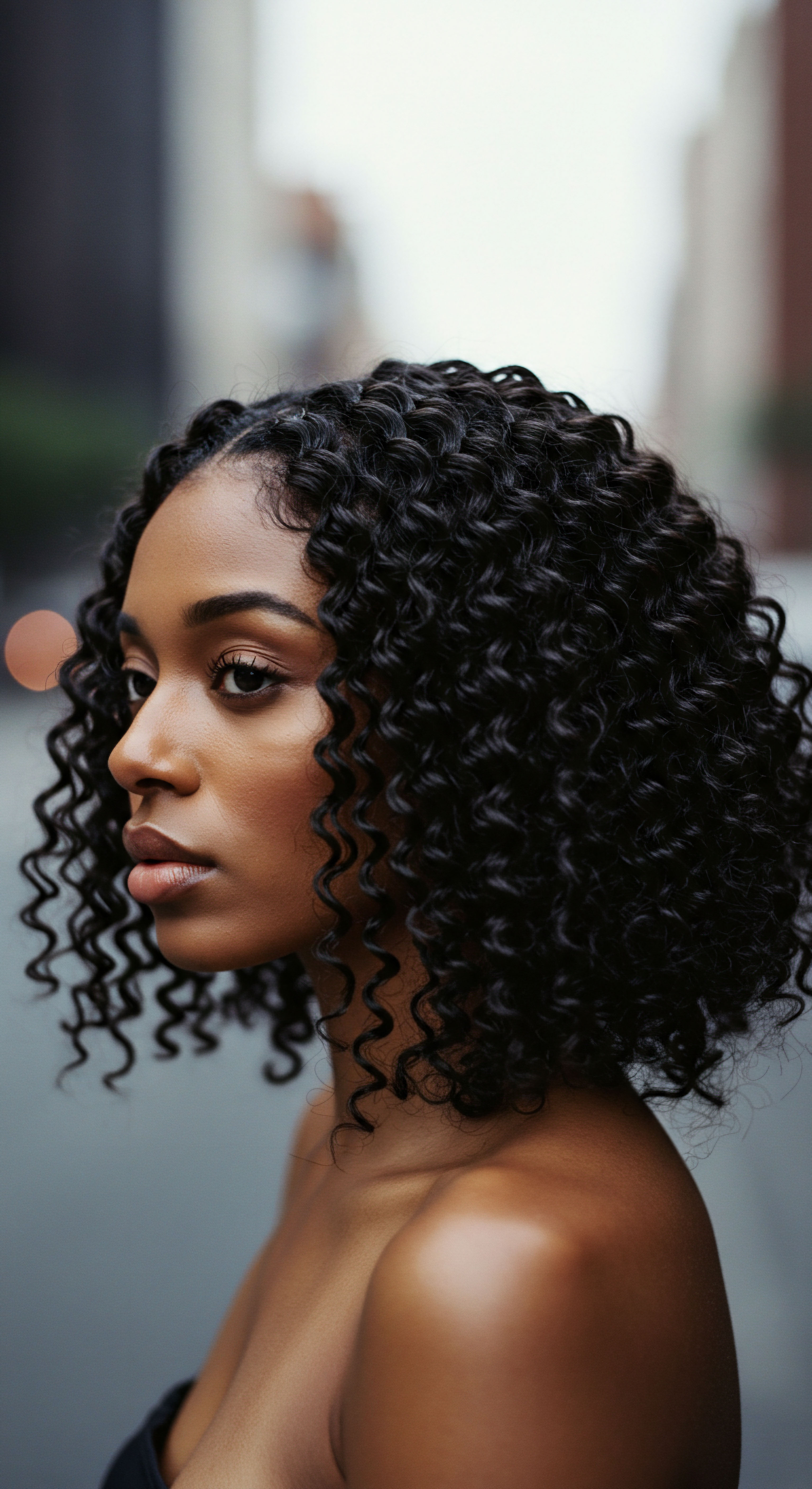
The Paradox of Penetration and Protection ❉ A Deeper Look at Oil Efficacy
While many modern hair care discussions highlight oil penetration as the ultimate goal, ancestral practices often implicitly understood a more complex reality. The effectiveness of an oil for moisture depends not solely on its ability to enter the hair shaft, but also on its capacity to form a protective, occlusive layer on the surface. This dual action—internal nourishment and external sealing—is what truly safeguards textured hair from dehydration.
Consider the case of Black Seed Oil (Nigella sativa). Traditional uses for hair health are widespread, and modern research has begun to validate some of these claims, particularly concerning scalp health and hair density. A 2013 study involving women with telogen effluvium, a common form of temporary hair shedding, revealed a significant improvement in hair density and thickness after three months of consistent use of a lotion containing 0.5 percent black seed oil.
This suggests that beyond simple moisture, certain ancestral oils possess compounds, like thymoquinone in black seed oil, that can positively influence the hair growth cycle and scalp environment. The ability of such oils to address underlying scalp inflammation or microbial imbalances contributes to an overall healthier environment for moisture retention and growth, underscoring a more holistic benefit than just superficial hydration.
This perspective shifts the conversation from a singular focus on “moisture penetration” to a broader appreciation of how ancestral oils work in concert with hair’s natural physiology, offering a spectrum of benefits from barrier reinforcement to follicular support. The true power lies in their comprehensive influence on hair health, not just a single mechanism.

Beyond Simple Moisture ❉ Other Properties
Many ancestral oils possess properties that extend beyond simple hydration.
- Anti-Inflammatory Properties ❉ Oils like Black Seed Oil contain compounds that can soothe scalp inflammation, which is critical for a healthy scalp and can indirectly support moisture retention by reducing irritation that leads to scratching and cuticle damage.
- Antimicrobial and Antifungal Effects ❉ Some oils, or the herbs infused within them, have natural antimicrobial qualities that help maintain a healthy scalp environment, combating issues like dandruff. Bhringraj Oil, for example, is recognized for its antifungal properties.
- Antioxidant Content ❉ Many plant oils are rich in antioxidants, such as vitamin E, which help protect hair from environmental damage, including UV radiation and pollution. This protective barrier helps preserve the hair’s structural integrity and its ability to hold moisture.
The effectiveness of ancestral oils lies in their holistic influence, from direct hydration to fostering a healthy scalp environment.
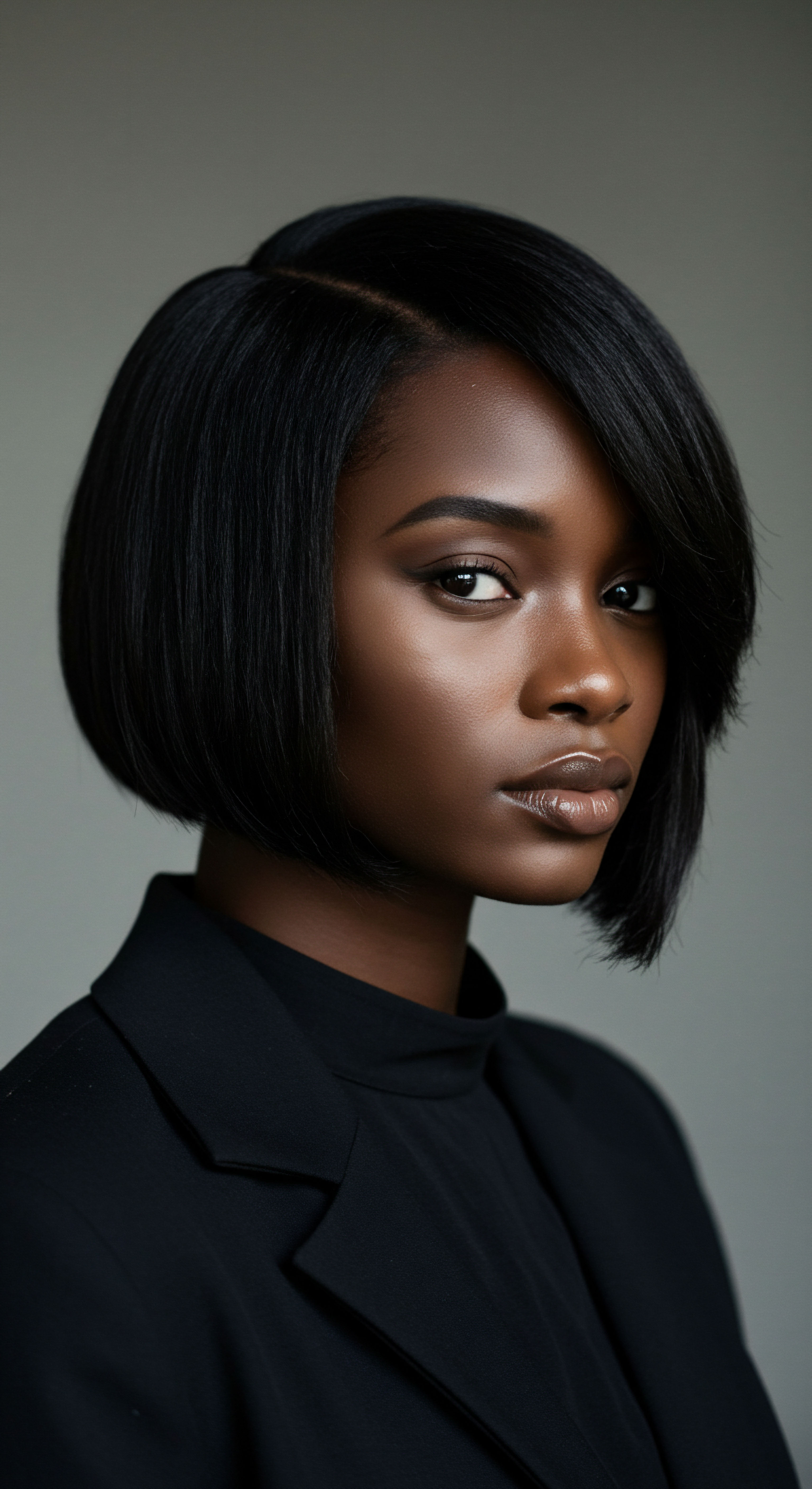
Cultural Preservation and Modern Relevance
The contemporary interest in ancestral plant oils also raises important considerations about cultural preservation and ethical sourcing. As these traditional ingredients gain global popularity, it becomes vital to ensure that the communities who stewarded this knowledge for centuries are recognized and benefit equitably. This involves supporting fair trade practices and respecting the intellectual heritage of indigenous groups.
The wisdom embedded in ancestral hair care practices offers a valuable counterpoint to the often-fragmented approach of modern beauty. It reminds us that true hair health often stems from a harmonious relationship with nature, a deep understanding of our unique hair, and a respectful connection to the traditions that came before us. By understanding the science that validates these ancient choices, we can honor the past while thoughtfully shaping the future of textured hair care.
| Fatty Acid Type Lauric Acid |
| Common Oils Coconut Oil |
| Hair Benefit Deep penetration, protein loss reduction. |
| Molecular Interaction Small, linear structure allows entry into cortex. |
| Fatty Acid Type Oleic Acid |
| Common Oils Olive Oil, Argan Oil, Marula Oil |
| Hair Benefit Moisture sealing, elasticity, softening. |
| Molecular Interaction Larger, monounsaturated, coats hair surface effectively. |
| Fatty Acid Type Ricinoleic Acid |
| Common Oils Castor Oil |
| Hair Benefit Moisturizing, scalp health. |
| Molecular Interaction Unique hydroxyl group, high viscosity for sealing. |
| Fatty Acid Type Erucic Acid |
| Common Oils Abyssinian Oil |
| Hair Benefit Lightweight conditioning, shine, detangling. |
| Molecular Interaction Long chain, non-greasy feel, good for slip. |
| Fatty Acid Type The specific fatty acid composition of each oil contributes to its unique interaction with the hair fiber. |
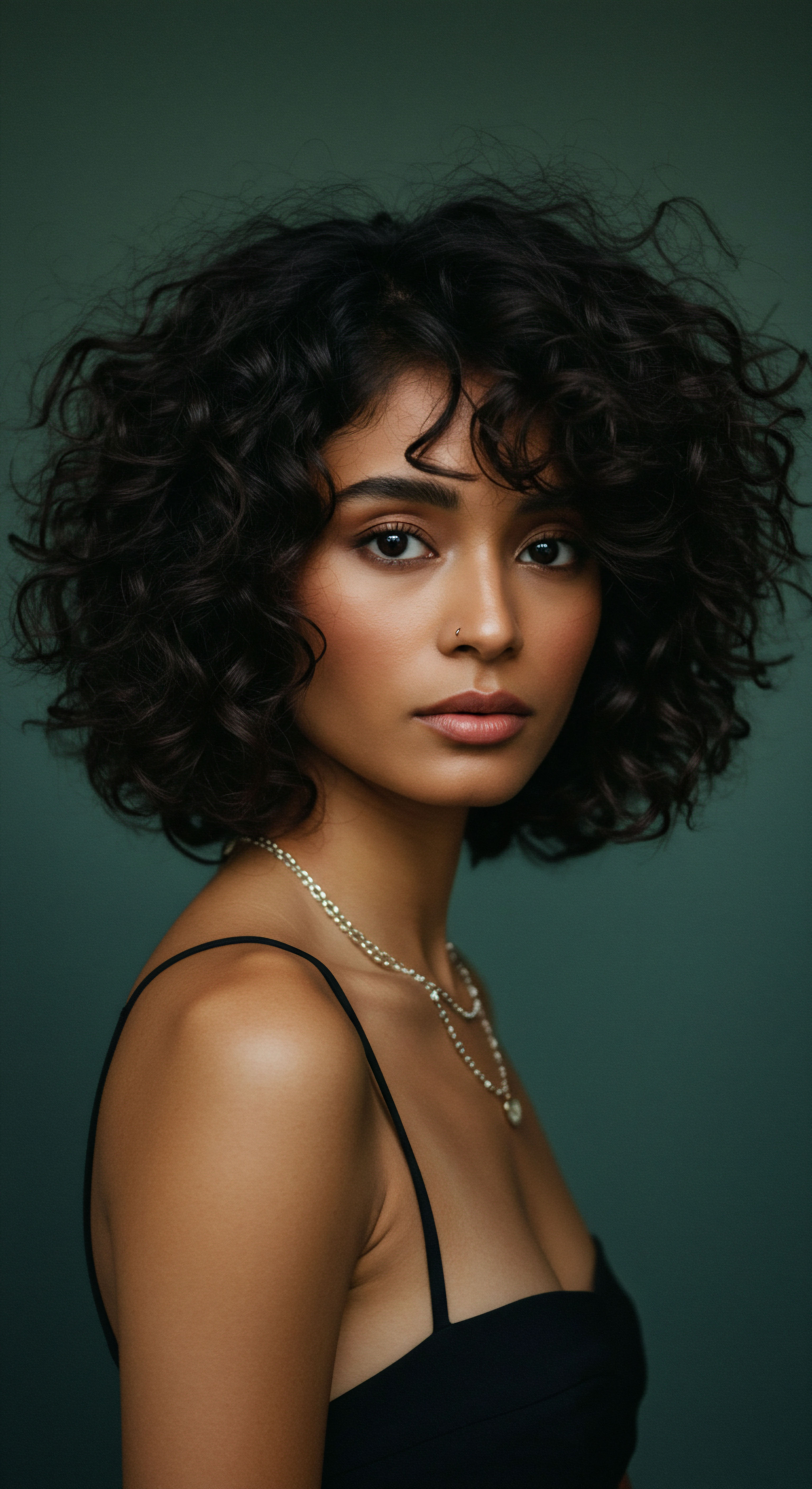
Reflection
As we consider the journey through ancestral plant oils and their enduring legacy in hair moisture, a gentle truth settles upon us ❉ the profound wisdom of the past, often dismissed in our fast-paced world, continues to offer a guiding light. The soft hum of ancient practices, the quiet strength of botanical allies, and the deep understanding of hair’s inherent needs resonate with a timeless grace. Our textured strands, with their unique beauty and spirited nature, hold within them echoes of these traditions, waiting to be honored and nurtured. This exploration is not simply a historical account; it is an invitation to pause, to listen to the whispers of heritage, and to allow the warmth of ancestral knowledge to settle upon our own hair journeys, reminding us of the enduring connection between earth, spirit, and strand.

References
- Ahuja, M. & Kumar, A. (2022). Hair Oils ❉ Indigenous Knowledge Revisited. Pharmacognosy Reviews, 16(32), 241-247.
- Rele, J. S. & Mohile, R. B. (2003). Effect of mineral oil, sunflower oil, and coconut oil on prevention of hair damage. Journal of Cosmetic Science, 54(2), 175-192.
- Keck, C. M. & Müller, R. H. (2013). Nanomedicine for the delivery of active ingredients to the hair follicle ❉ current state of the art. Journal of Pharmacy and Pharmacology, 65(9), 1279-1290.
- Gopinath, H. & Prakash, M. (2018). The Ayurvedic approach to hair care. International Journal of Ayurvedic and Herbal Medicine, 8(2), 3122-3128.
- Gaur, R. & Sharma, M. (2022). A review on medicinal plants used in hair care. International Journal of Research in Pharmacy and Pharmaceutical Sciences, 7(1), 1-8.
- Csuka, D. Gara, J. Kerepesi, I. Kovacs, L. & Kovacs, R. (2022). A systematic review on the lipid composition of human hair. International Journal of Dermatology, 61(6), 675-685.
- Draelos, Z. D. (2010). Hair cosmetics. Clinics in Dermatology, 28(4), 430-435.
- Gavazzoni Dias, M. F. R. (2015). Hair cosmetics ❉ an overview. International Journal of Trichology, 7(1), 2-15.
- Kumar, A. & Misra, N. (2008). Hair care in Ayurveda ❉ A review. International Journal of Green Pharmacy, 2(4), 213-216.
- Loden, M. & Maibach, H. I. (2006). Dry Skin and Moisturizers ❉ Chemistry and Function. CRC Press.
- Waller, R. (2016). The Science of Natural Hair Care. Independent Publishing.
- Trueb, R. M. (2021). The enigma of hair greying. Dermatology Practical & Conceptual, 11(1), e2021004.
- Randhawa, M. & Kaur, S. (2013). Hair ❉ a review of the role of oils in hair health. International Journal of Trichology, 5(1), 2-10.
- Panahi, Y. et al. (2013). Nigella sativa L. for treatment of telogen effluvium ❉ A randomized controlled trial. Journal of Cosmetics, Dermatological Sciences and Applications, 3(3), 131-135.
- Harding, C. R. et al. (2000). The lipid composition of human hair. Journal of Cosmetic Science, 51(3), 159-173.